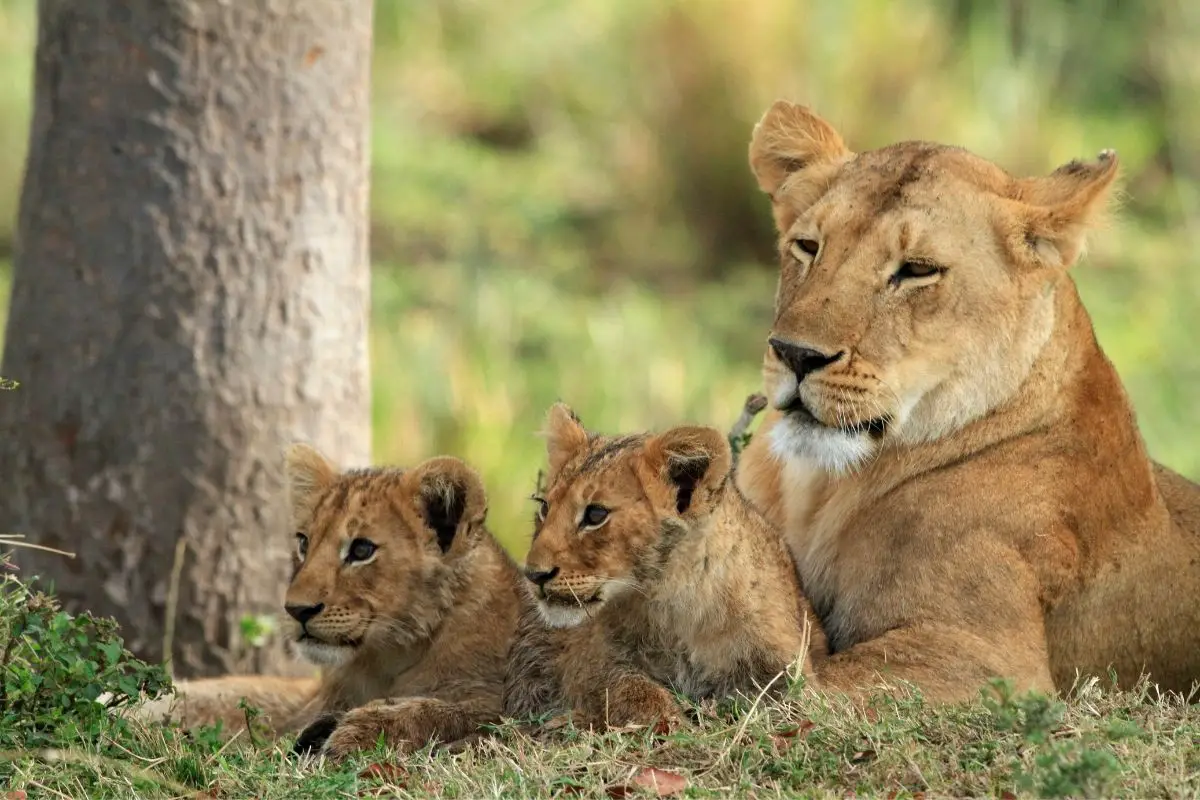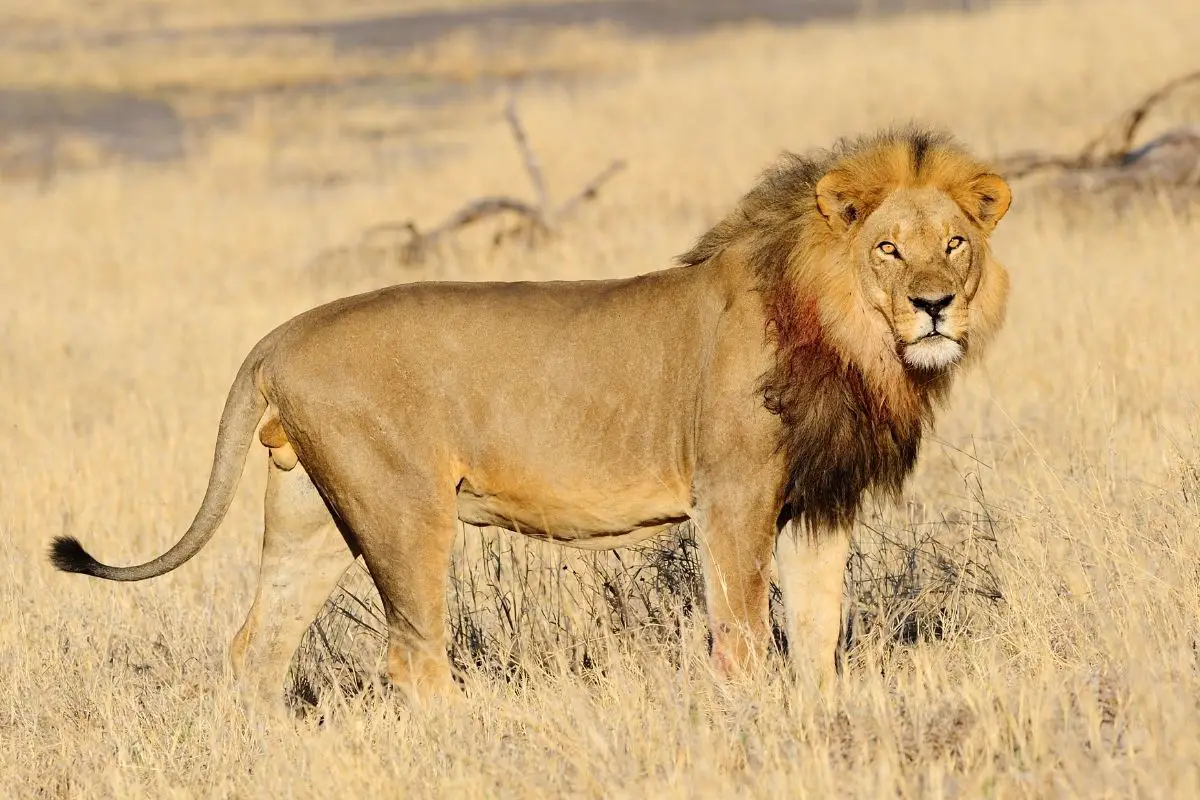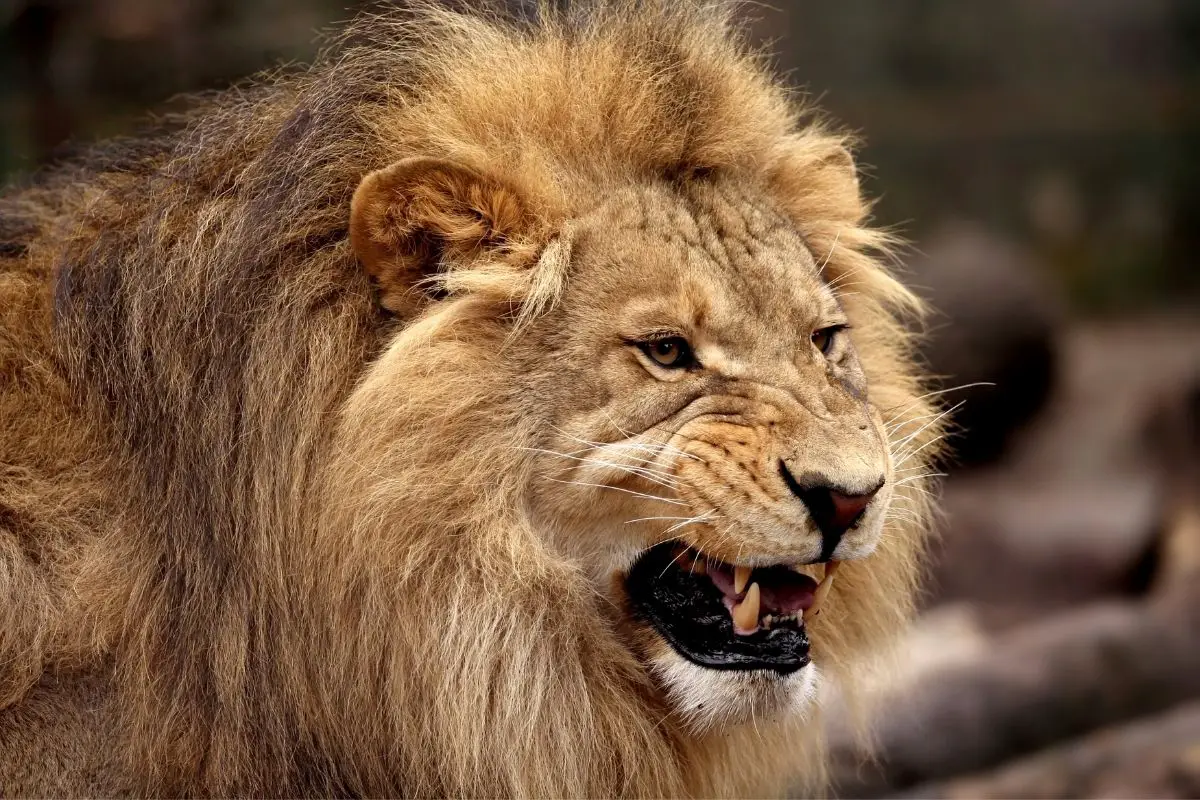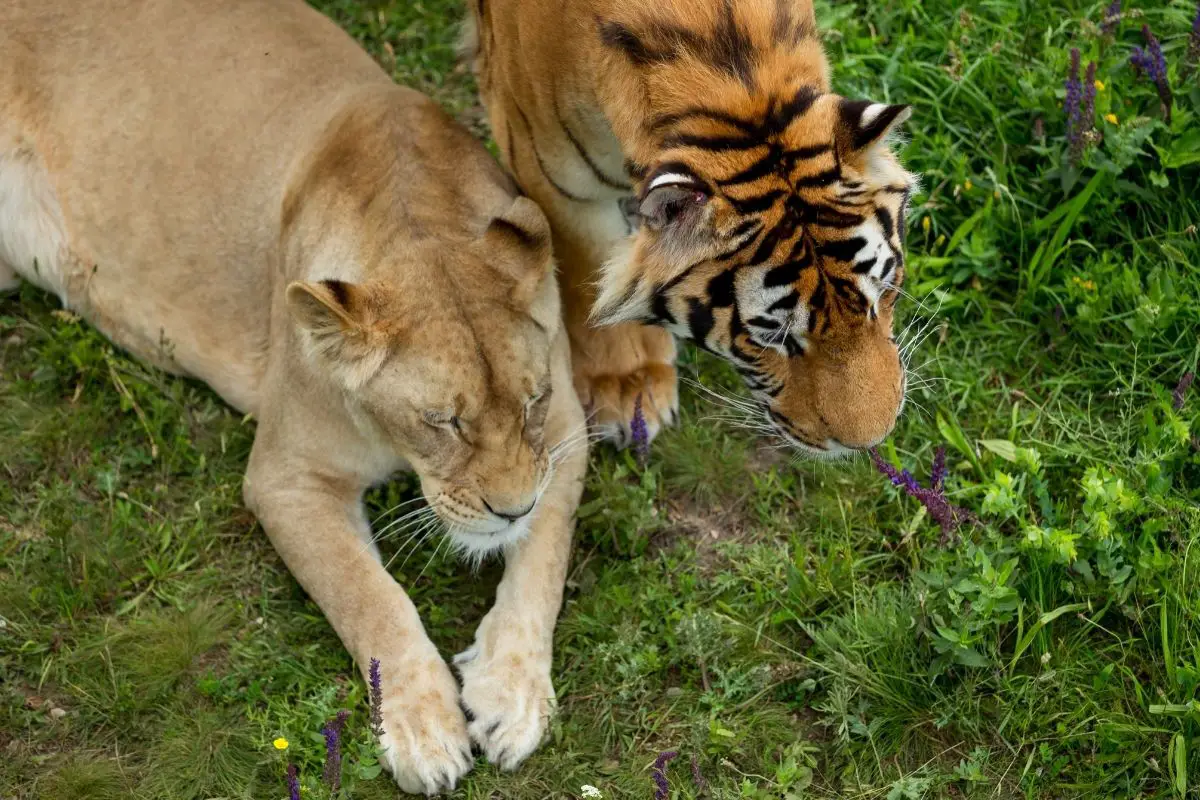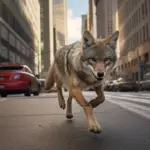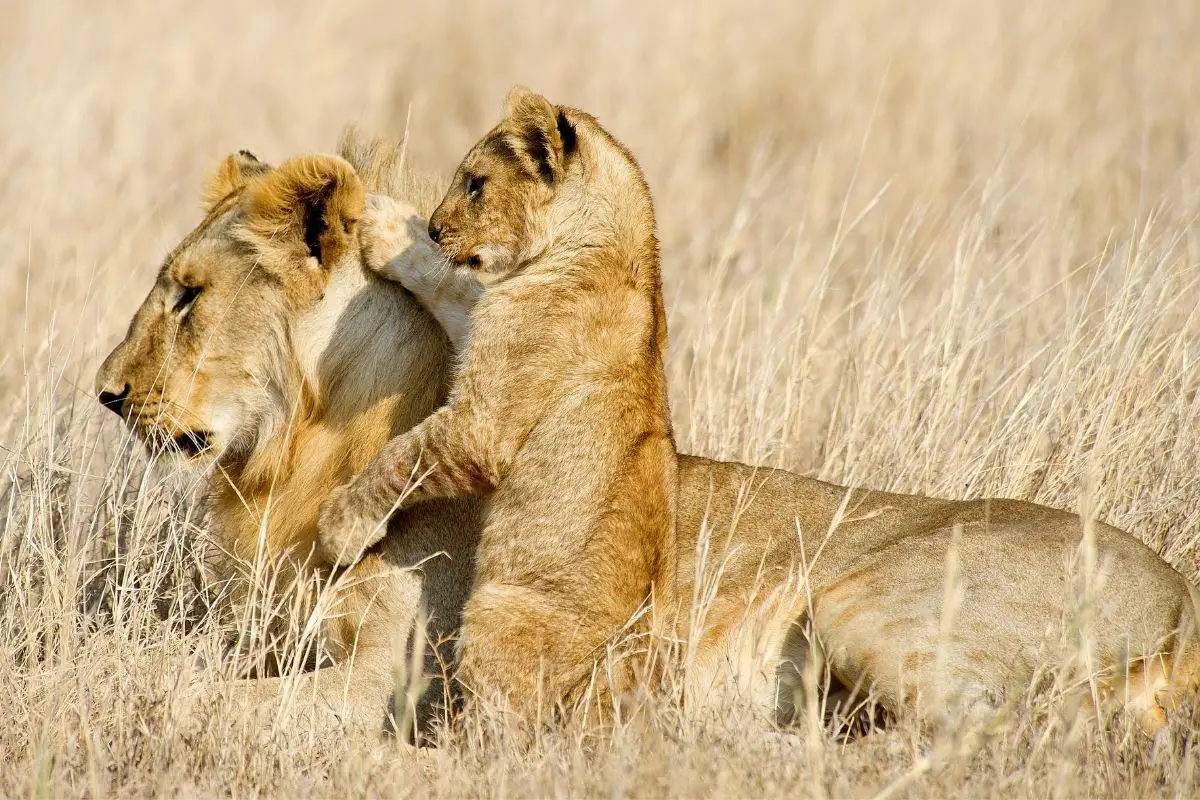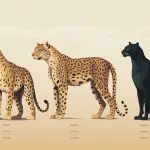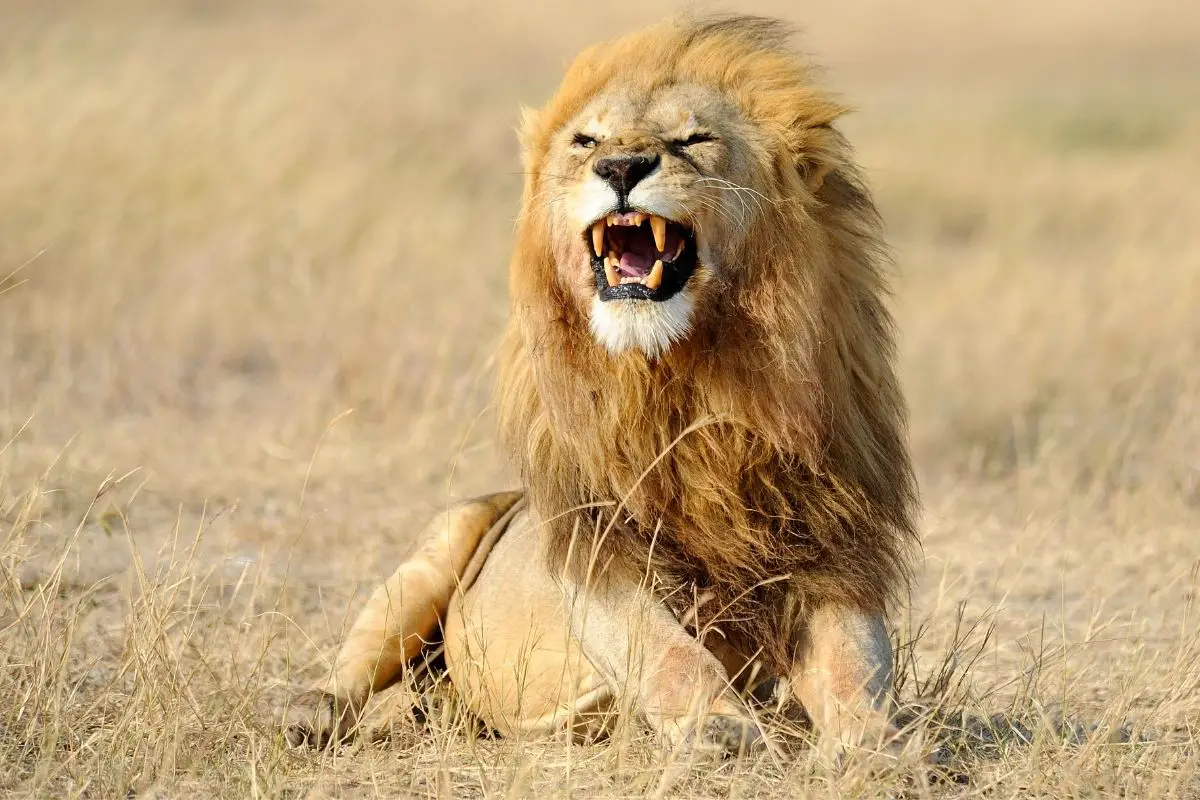Updated: July 2025
Lions are among Africa’s most formidable apex predators, with their hunting success dramatically increased when working together in coordinated prides.
With their incredible agility, explosive speed reaching 50 mph, and bone-crushing strength, lions may seem like unstoppable killing machines.

As rulers of the African savanna, it might seem logical that lions would prey on virtually any animal within their reach – but do they actually hunt vultures?
Vultures are among nature’s most misunderstood creatures. While many people find these carrion-eating birds repulsive, they’re actually essential environmental cleaners.
Their specialized diet of decomposing carcasses provides a critical ecological service, preventing disease outbreaks and maintaining ecosystem balance. Unfortunately, vulture populations worldwide have declined by over 80% since the 1990s.
But are lions responsible for this dramatic population decline? The answer might surprise you.
Do Lions Eat Vultures?
Lions do not actively hunt vultures as prey. This relationship is more complex than simple predator-prey dynamics.
Why lions don’t target vultures:
• Size mismatch: Adult vultures are large birds with wingspans up to 10 feet, making them difficult aerial targets
• Feeding strategy: Lions prefer ground-based mammals and focus their energy on high-calorie prey like zebras, wildebeest, and buffalo
• Mutual benefit: Vultures often help lions by circling above carcasses, inadvertently signaling fresh kills to other predators
However, lions may occasionally compete with vultures at carcass sites, sometimes swatting at them to drive them away from their kills.
Interestingly, the relationship can reverse when lions die from natural causes, injury, or old age – vultures will readily feed on lion carcasses as part of their ecological cleanup role.
What Animals Actually Threaten Vultures?
While lions pose minimal threat to vultures, these magnificent scavengers face numerous natural predators, especially during their vulnerable juvenile stages.
Primary natural predators include:
• Aerial hunters: Golden eagles, bald eagles, and red-tailed hawks target young vultures
• Ground predators: Jackals, hyenas, and large snakes raid nests for eggs and chicks
• Nocturnal threats: Great horned owls hunt juvenile vultures under cover of darkness
• Mammalian raiders: In North America, raccoons and opossums frequently destroy vulture nests
However, humans remain the greatest threat to vulture populations through habitat destruction, poisoning, and illegal hunting for traditional medicine.
Jackals: Opportunistic Nest Raiders
Jackals present a unique challenge to vulture populations due to their shared scavenging lifestyle and opportunistic nature.
These intelligent carnivores primarily feed on carrion left by larger predators, but when food becomes scarce, they actively hunt vulnerable prey – including young vultures.
The jackal-vulture relationship is complex:
• Mutual dependence: Vultures often wait for jackals to tear open tough carcass hides with their stronger jaws
• Peaceful coexistence: When food is abundant, both species feed together without conflict
• Competition turns deadly: During food shortages, jackals may attack and kill vulture chicks or steal eggs
Young vultures are particularly vulnerable because they require 130+ days of parental care before fledging – much longer than most birds of prey.
Hawks: Aerial Predators
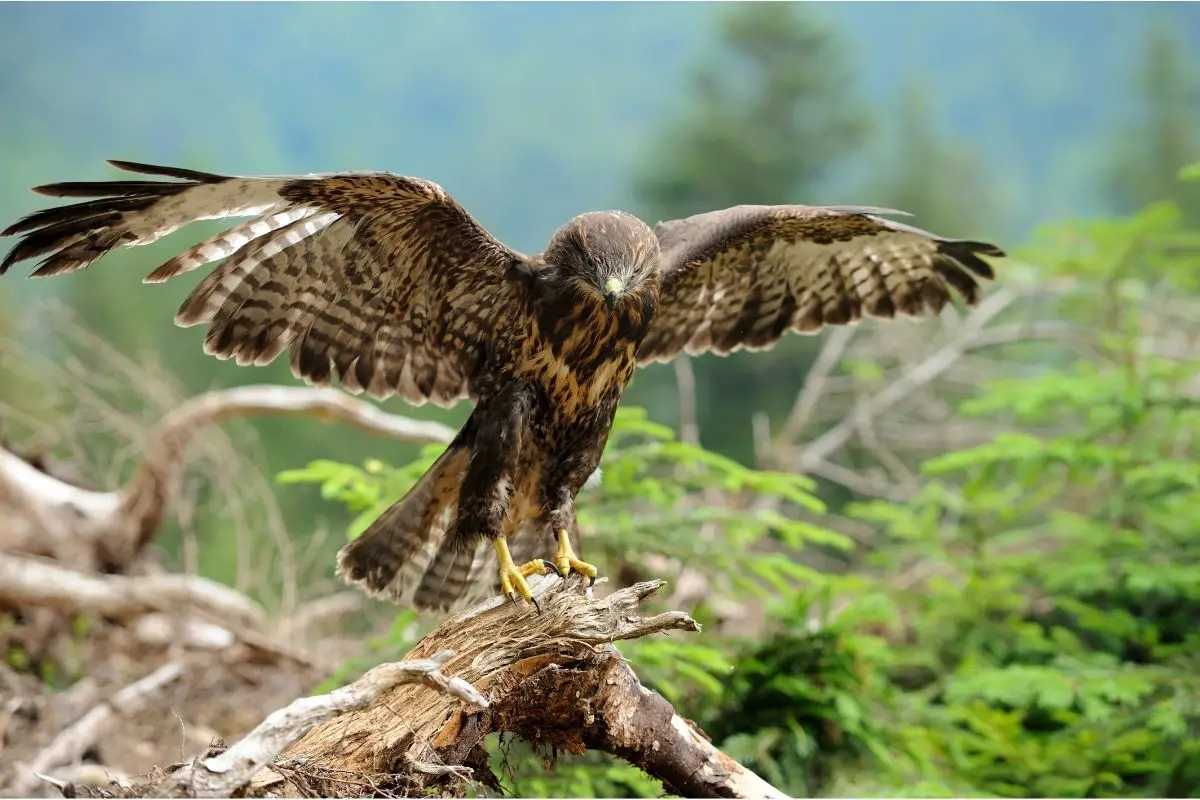
Hawks rank among the most formidable aerial predators, possessing extraordinary hunting adaptations that make them deadly to young vultures.
Hawks’ hunting advantages:
• Superior vision: Can spot small prey from 100+ feet while soaring
• Powerful talons: Razor-sharp claws designed for grasping and killing
• Hooked beaks: Perfect for tearing flesh from captured prey
Red-tailed hawks pose the greatest threat to vulture populations, frequently raiding unguarded nests to steal chicks.
However, adult vultures are formidable opponents:
• Size advantage: Adult vultures significantly outweigh most hawk species
• Wingspan dominance: Vulture wingspans can reach 10 feet compared to hawks’ 4-5 feet
• Stronger beaks: Vultures possess more powerful bills adapted for tearing tough hide
The extended maturation period makes vultures especially vulnerable – white-backed vultures don’t reach full maturity until 5-7 years old.
Snakes: Stealthy Nest Invaders
Snakes represent a particularly insidious threat to vulture populations due to their stealth and climbing abilities.
Despite vultures’ attempts to build nests in seemingly inaccessible locations – high cliff faces, tall trees, or rocky outcrops – many snake species are surprisingly agile climbers.
Snake hunting strategies:
• Egg specialists: Some species feed exclusively on bird eggs, timing attacks when parents leave to forage
• Chick predation: Young snakes target newly hatched vultures before they develop defensive capabilities
• Stealth advantage: Silent approach allows snakes to avoid detection by protective parents
Fortunately, successful snake predation on vultures remains relatively rare due to vigilant parental guarding and the defensive capabilities of adult vultures.
Why Vultures Are Ecosystem Heroes
Far from being mere scavengers, vultures serve as nature’s disease prevention specialists and environmental cleanup crew.
Critical ecosystem services:
• Disease prevention: Eliminate carcasses that could spread anthrax, rabies, brucellosis, and tuberculosis
• Rapid cleanup: Can strip a carcass clean within hours, preventing bacterial proliferation
• Acid neutralization: Possess stomach acid 10-100 times stronger than humans, neutralizing deadly pathogens
• Economic value: Provide billions of dollars in ecosystem services by preventing disease outbreaks
Without vultures, decomposing carcasses would pose significant health risks to both wildlife and human populations, potentially triggering disease epidemics.
Recent research shows that vulture population declines in India led to increased feral dog populations, rabies outbreaks, and over 500,000 human deaths between 2000-2005.
Final Thoughts
The relationship between lions and vultures exemplifies nature’s complex interconnections rather than simple predator-prey dynamics.
While lions don’t actively hunt vultures, these magnificent scavengers face numerous threats from other predators, habitat loss, and human persecution.
Key takeaways:
• Lions and vultures maintain a competitive but non-predatory relationship
• Vultures face their greatest threats from humans, not natural predators
• These “ugly” birds provide invaluable ecosystem services worth billions of dollars
Understanding these relationships helps us appreciate the delicate balance of African ecosystems and the urgent need for vulture conservation in 2025.
Rather than viewing vultures as disgusting scavengers, we should recognize them as essential ecosystem engineers that keep our world healthy and disease-free.
- Sink Your Teeth Into This: Analyzing the Powerful Lion Bite Force - September 8, 2023
- Siberian Tigers: Everything You Need To Know - September 4, 2023
- Do Lions Eat Humans? Understanding Lion Aggression and Risks - September 4, 2023

